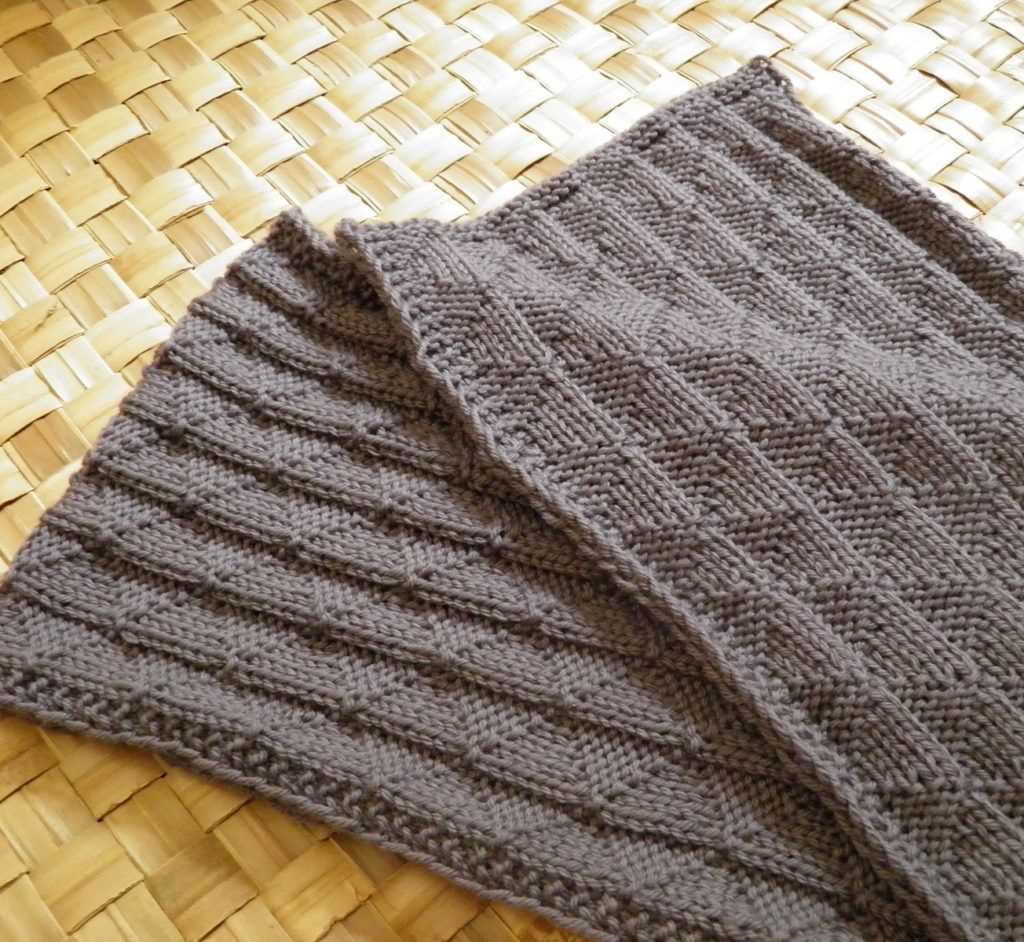
If you are looking for some new knitting project to keep you busy during the cold winter months, or if you just want to add a stylish accessory to your wardrobe, knitting scarfs is a great choice. Scarfs are versatile and practical, and with the wide variety of knitting patterns available, you can create unique scarfs that reflect your personal style and creativity. Whether you are a beginner knitter or an experienced one, there are patterns for every skill level and design preference.
Knitting scarfs not only allows you to stay warm and cozy during winter, but it also gives you the opportunity to unleash your creativity and create unique designs. From simple garter stitch scarfs to intricate lace patterns, there are endless possibilities when it comes to choosing knitting patterns. You can experiment with different stitch patterns, colors, and yarn choices to create scarfs that are truly one-of-a-kind. Knitting scarfs also makes for a thoughtful and personalized gift for your loved ones.
When choosing a knitting pattern for scarfs, consider the level of difficulty, the time commitment, and the materials required. If you are a beginner knitter, start with a simple pattern that uses basic stitches. As you gain more experience, you can challenge yourself with more complex patterns, such as cable or colorwork. Additionally, take into account the thickness and weight of the yarn, as it will affect the drape and warmth of the finished scarf. And don’t be afraid to try out different colors and yarn textures to add visual interest to your scarf!
Knitting Patterns for Scarfs
Scarfs are timeless accessories that can add a touch of style and warmth to any outfit. They are versatile and can be worn in various ways, making them a must-have in every wardrobe. If you are a knitting enthusiast, you can create beautiful and unique scarfs using different knitting patterns.
When it comes to knitting patterns for scarfs, the options are endless. From simple and classic designs to intricate lace patterns, you can choose a pattern that suits your skill level and personal style. Whether you prefer a chunky, cozy scarf for winter or a lightweight, delicate scarf for spring, there is a knitting pattern out there that will meet your needs.
Classic Garter Stitch Scarf
One of the simplest knitting patterns for scarfs is the classic garter stitch. This pattern involves knitting every row, which creates a textured, bumpy fabric. It is perfect for beginners or those who want to create a timeless and versatile accessory. You can choose any yarn and needle size for this pattern, depending on the desired thickness and drape of your scarf.
To create a garter stitch scarf, cast on an even number of stitches and knit every row until you reach your desired length. You can add fringe or tassels for an extra touch of flair. This pattern is great for showcasing the beauty of variegated or self-striping yarns.
Lace Infinity Scarf
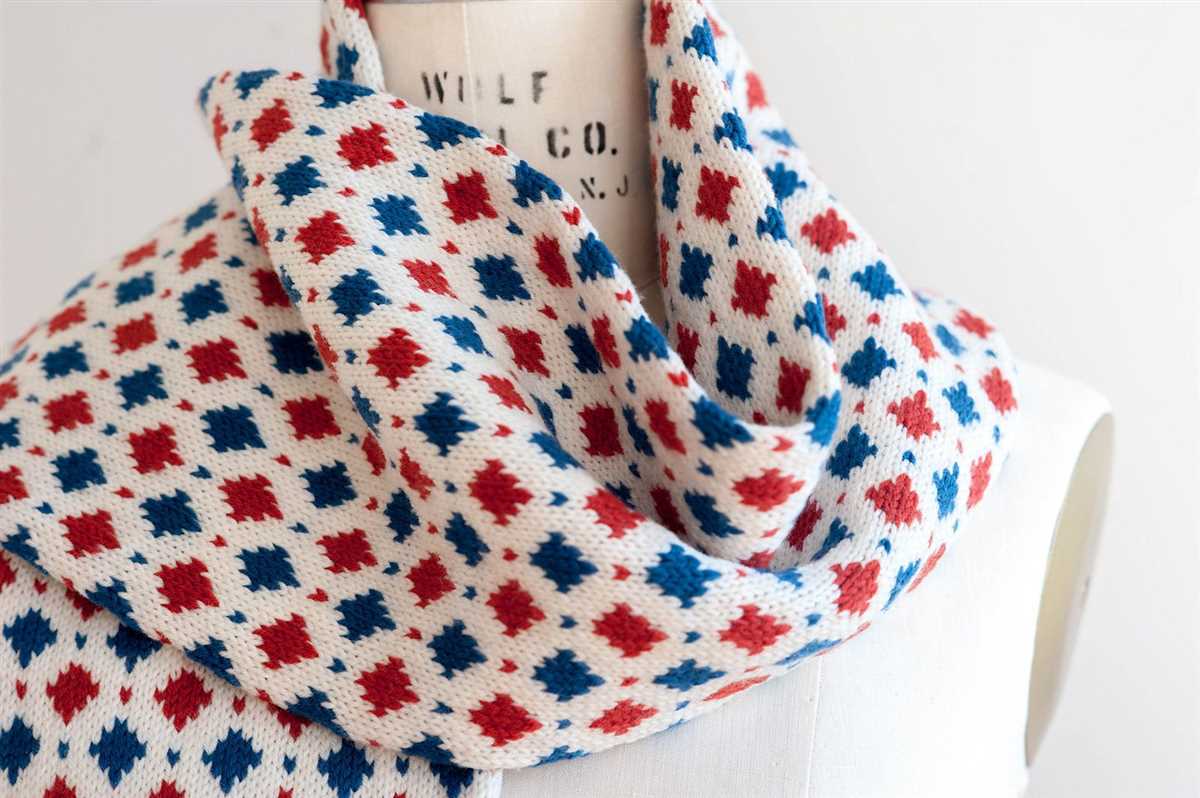
If you are looking for a more intricate knitting pattern, consider trying a lace infinity scarf. Lace patterns can add elegance and femininity to your scarf, making it a perfect accessory for special occasions or even everyday wear.
To knit a lace infinity scarf, you will need to follow a lace stitch pattern, which typically involves yarn overs, decreases, and other lace techniques. The pattern may include charts or written instructions to guide you through the process. Choose a lightweight yarn like silk or bamboo for a delicate and ethereal look.
- Create a cast-on edge and work the lace stitch pattern according to the instructions.
- After completing the pattern, bind off the stitches and join the ends of the scarf to form a loop.
- You can block the scarf to open up the lace and enhance its beauty.
Remember, knitting patterns for scarfs offer endless opportunities for creativity and personalization. Experiment with different stitches, yarns, and colors to create scarfs that reflect your unique style.
The Basics
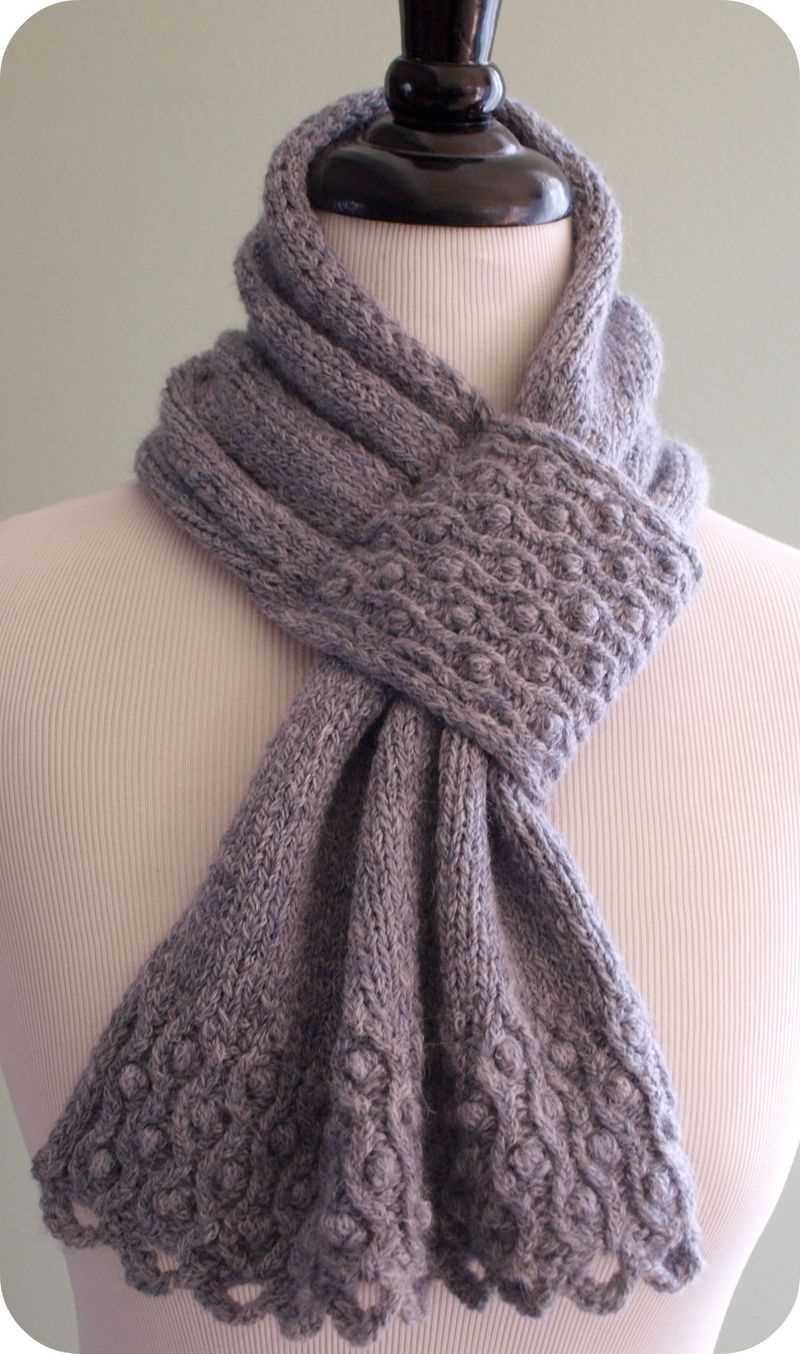
When it comes to knitting scarfs, it’s important to start with the basics. Whether you’re a beginner or an experienced knitter, understanding the fundamental techniques and patterns will ensure a successful project.
One of the first things to consider when starting a knitting project is the choice of yarn. You’ll want to select a yarn that is suitable for scarfs, such as a soft and warm material like wool or cashmere. The thickness or weight of the yarn will also impact the final result, so keep that in mind when making your selection.
Essential Techniques
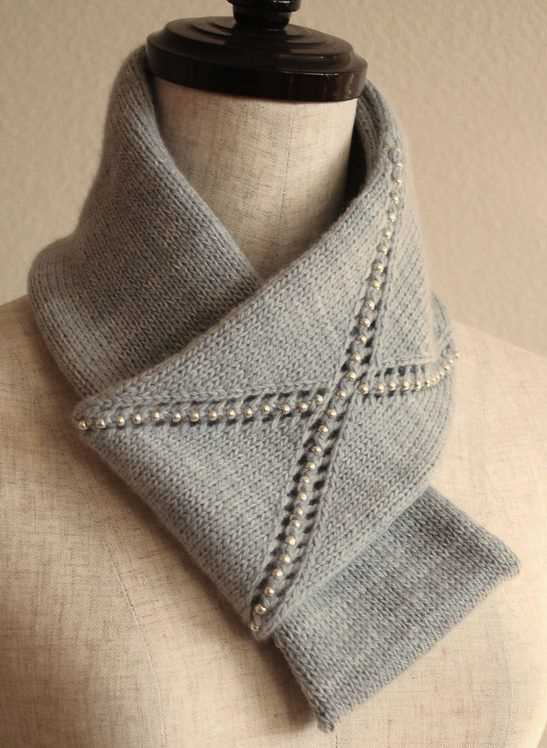
There are a few essential knitting techniques that you’ll need to know for most scarf patterns. These include casting on, knitting stitches, purling stitches, and binding off. Casting on is the process of creating the first row of stitches on your knitting needle, which will form the foundation of your scarf. As you work through your pattern, you’ll use knit stitches to create a smooth and flat surface, while purl stitches will create a textured effect. Finally, binding off is the process of finishing your project and securing the stitches in place.
Simple Scarf Patterns
If you’re a beginner knitter, it’s best to start with simple scarf patterns that require basic stitches and techniques. A basic garter stitch scarf, for example, is created by knitting every row and is perfect for practicing your knitting skills. As you gain more confidence, you can try more advanced patterns that incorporate different stitches, colorwork, or lacework. Remember to always read the pattern thoroughly before starting and keep track of your progress with stitch markers or row counters.
Resources and Inspiration
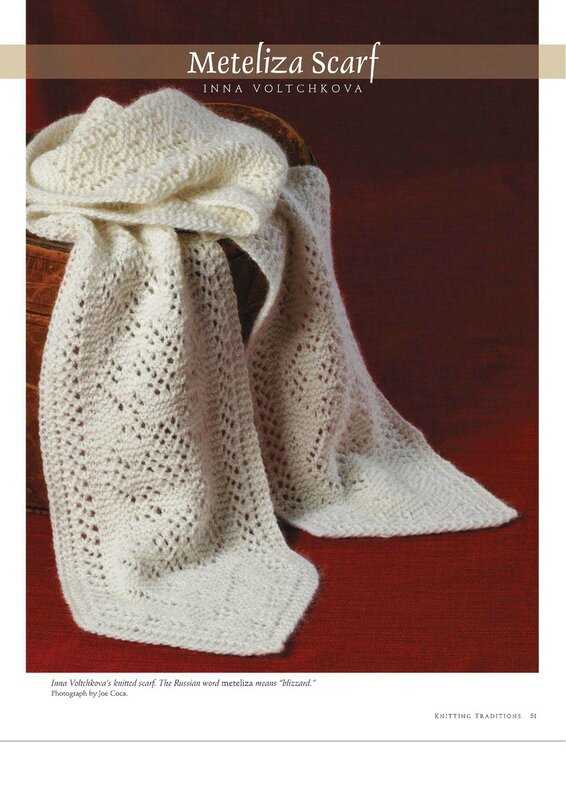
There are countless resources available online for knitting patterns and tutorials. Websites, blogs, and social media platforms dedicated to knitting provide a wealth of inspiration and guidance for all skill levels. Additionally, joining a local knitting group or taking a knitting class can offer hands-on instruction and the opportunity to connect with other knitting enthusiasts. Remember to stay patient and enjoy the process, as knitting can be a relaxing and rewarding hobby.
How to Choose Yarn and Needles
When it comes to knitting scarfs, choosing the right yarn and needles is crucial for achieving the desired outcome. The yarn you select will determine the texture, weight, and overall appearance of your scarf, while the needles will affect the stitch tension and knitting speed.
Choosing the yarn: There are several factors to consider when selecting yarn for your scarf. First, determine the fiber content you prefer. Wool is a popular choice for scarfs as it provides warmth and elasticity, but there are also other options such as alpaca, cotton, silk, or blends. Consider the climate and the intended use of the scarf to make the best choice. Next, consider the weight or thickness of the yarn. Bulky or chunky yarns will create a cozy and thick scarf, while finer weights will result in a more delicate and lightweight accessory. Lastly, pay attention to the color and texture of the yarn. Think about the style and wardrobe of the person who will wear the scarf and choose a yarn that complements their taste.
Choosing the needles: The size and type of needles you use will affect the stitch tension and overall look of your scarf. Generally, the thicker the yarn, the larger the needles you should use. Check the yarn label for recommended needle sizes, but bear in mind that this is just a starting point and you may need to adjust based on your own knitting style and the desired outcome. Straight needles are the most common for scarfs, but circular needles can also be used if you prefer to knit in the round. If you’re a beginner, it’s recommended to use longer needles as they provide more space for stitches and are easier to handle. Metal, wood, and plastic are the most common materials for needles, each offering different benefits in terms of weight, grip, and flexibility. Experiment with different needles to find the ones that feel most comfortable for you.
Basic Stitch Patterns
When it comes to knitting scarfs, having a variety of stitch patterns at your disposal can help you create beautiful and unique designs. Here are some basic stitch patterns that you can try:
1. Garter Stitch
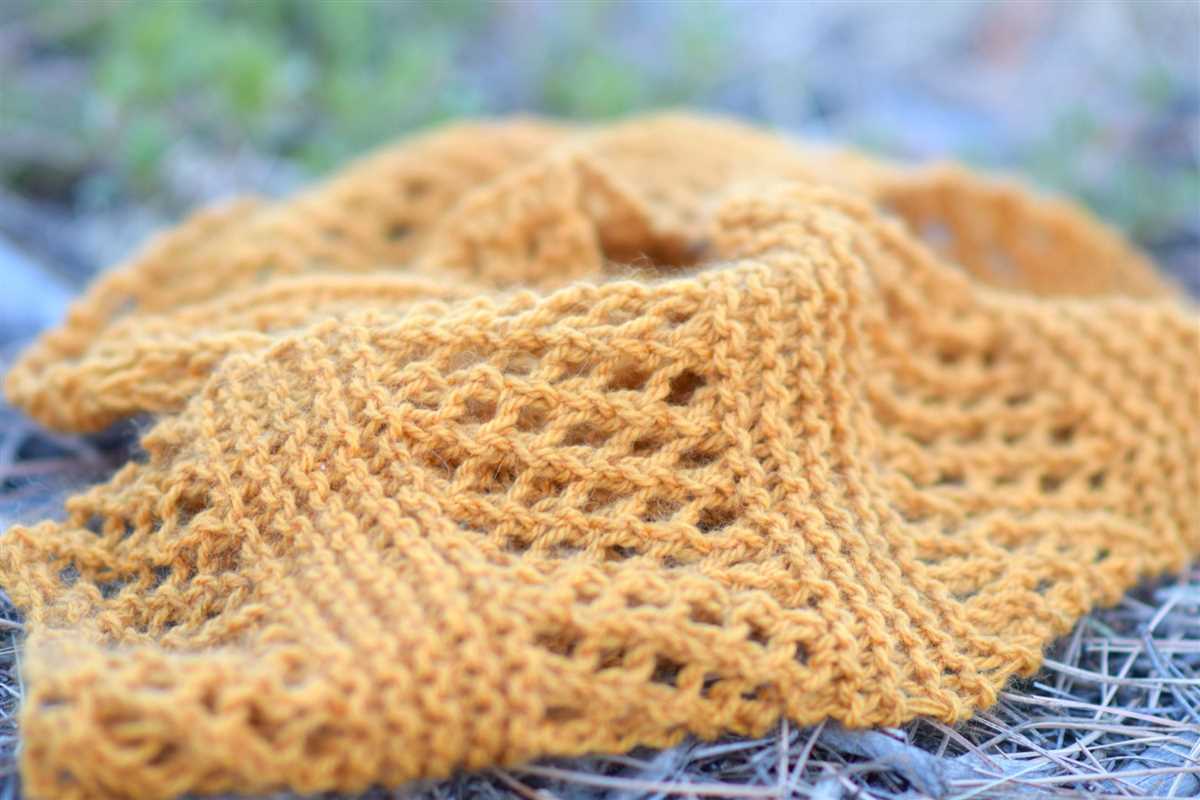
The garter stitch is one of the simplest and most popular stitch patterns. It is achieved by knitting every row, creating a textured fabric that lies flat and does not curl. This is a great stitch pattern for beginners as it is easy to remember and creates a cozy texture.
2. Stockinette Stitch
The stockinette stitch is another basic stitch pattern that is widely used in scarfs. It is created by knitting one row and then purling the next row. This results in a smooth and uniform fabric with a distinct pattern of “V” shapes on one side and horizontal lines on the other side. It is important to note that the stockinette stitch tends to curl at the edges, so adding a border or blocking the finished scarf can help prevent curling.
3. Ribbing Stitch
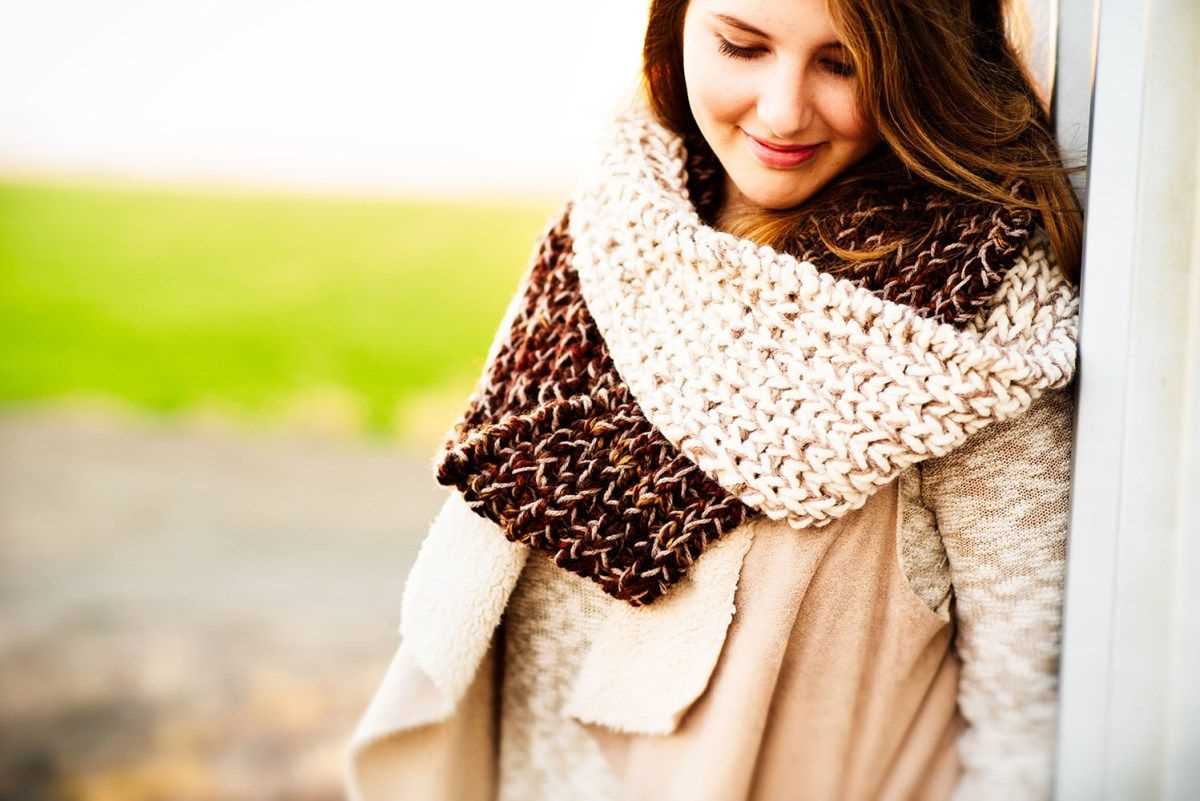
The ribbing stitch is a versatile stitch pattern that is commonly used for cuffs, borders, and edges. It is created by alternating knit and purl stitches in a specific pattern, such as knitting two stitches and purling two stitches. This creates a stretchy fabric that is ideal for scarfs as it allows the fabric to conform to the neck and stay in place.
- 4. Seed Stitch
- 5. Basketweave Stitch
- 6. Cable Stitch
These are just a few examples of basic stitch patterns that you can use in your scarf knitting projects. Feel free to experiment with different combinations and variations to create your own unique designs. Remember to always practice new stitch patterns on a swatch before incorporating them into your actual project to ensure that you are comfortable with the technique and achieve the desired result.
Casting On and Binding Off
Casting on and binding off are two important techniques in knitting that are used to start and finish a project. These methods create neat edges and secure the stitches in place.
Casting on is the process of adding the first row of stitches to your knitting needle. There are several different methods for casting on, including the long tail cast on, the cable cast on, and the knitted cast on. Each method creates a different edge and has its own advantages. It’s important to choose the right casting on method for your project, as it can affect the stretchiness and appearance of your finished scarf.
Once you have completed your knitting project, it’s time to bind off or cast off the stitches to create a finished edge. Binding off is the process of securing the stitches so they don’t unravel. The most common method of binding off is the basic bind off, which involves knitting two stitches, then passing the first stitch over the second stitch and off the needle. This process is repeated until all the stitches have been bound off. You can also use a stretchy bind off method, such as the Jeny’s Surprisingly Stretchy Bind Off, for projects that need extra flexibility.
Learning how to cast on and bind off properly is essential for any knitting project, including scarfs. These techniques not only create a clean and finished look, but they also ensure that your stitches are secure and won’t unravel. Practice different casting on and binding off methods to find the ones that work best for your knitting style and the desired effect of your scarf pattern.
Beginner Scarf Patterns
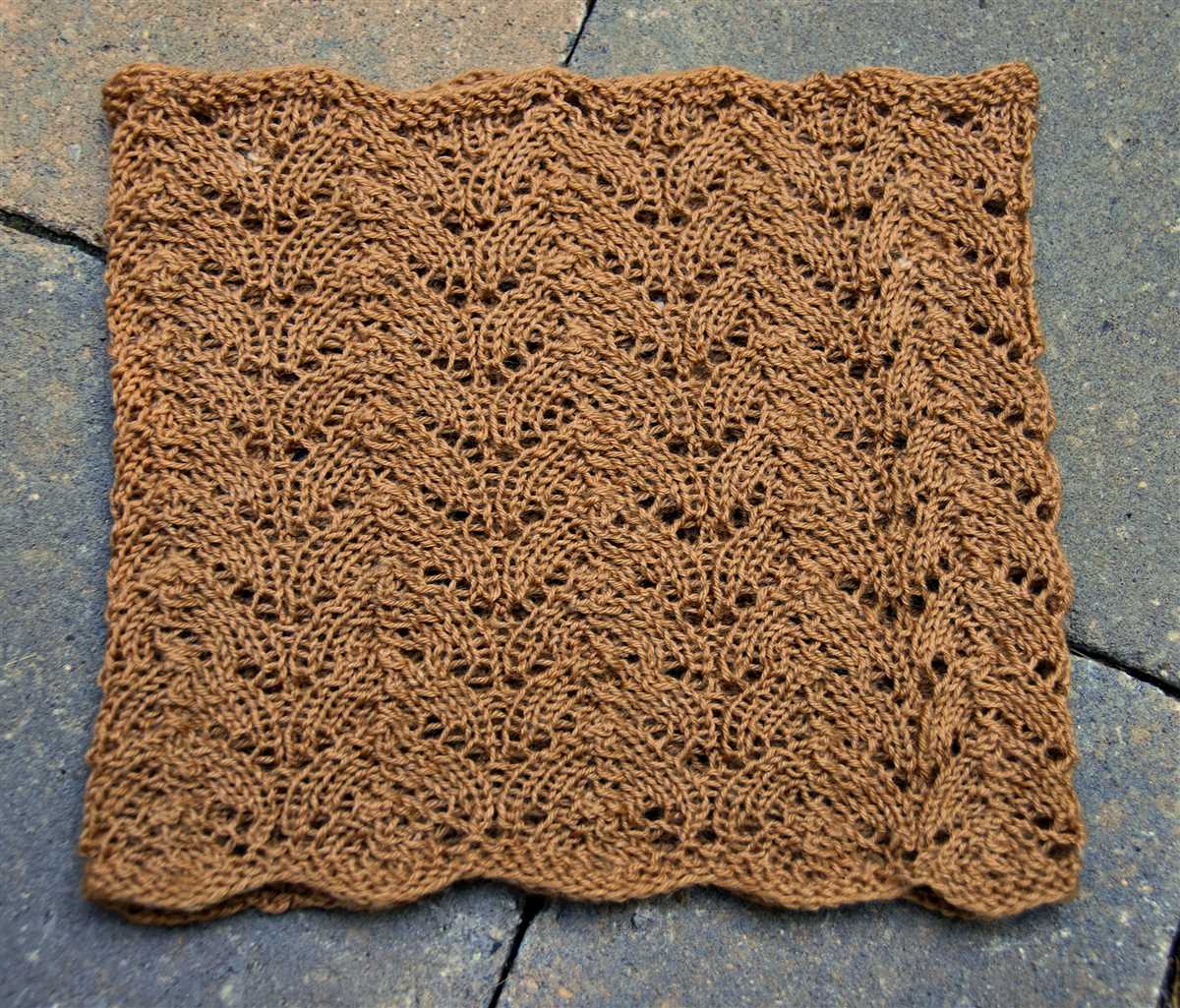
Starting to knit can feel overwhelming, but with the right patterns and some practice, you’ll be able to create beautiful scarfs in no time. Here are a few beginner-friendly scarf patterns to get you started:
Garter Stitch Scarf
The garter stitch is the most basic knitting stitch, making it perfect for beginners. To create a garter stitch scarf, simply knit every row. This pattern creates a cozy and textured scarf that’s perfect for chilly weather. Experiment with different yarn colors to add some personal flair to your scarf!
Ribbed Scarf
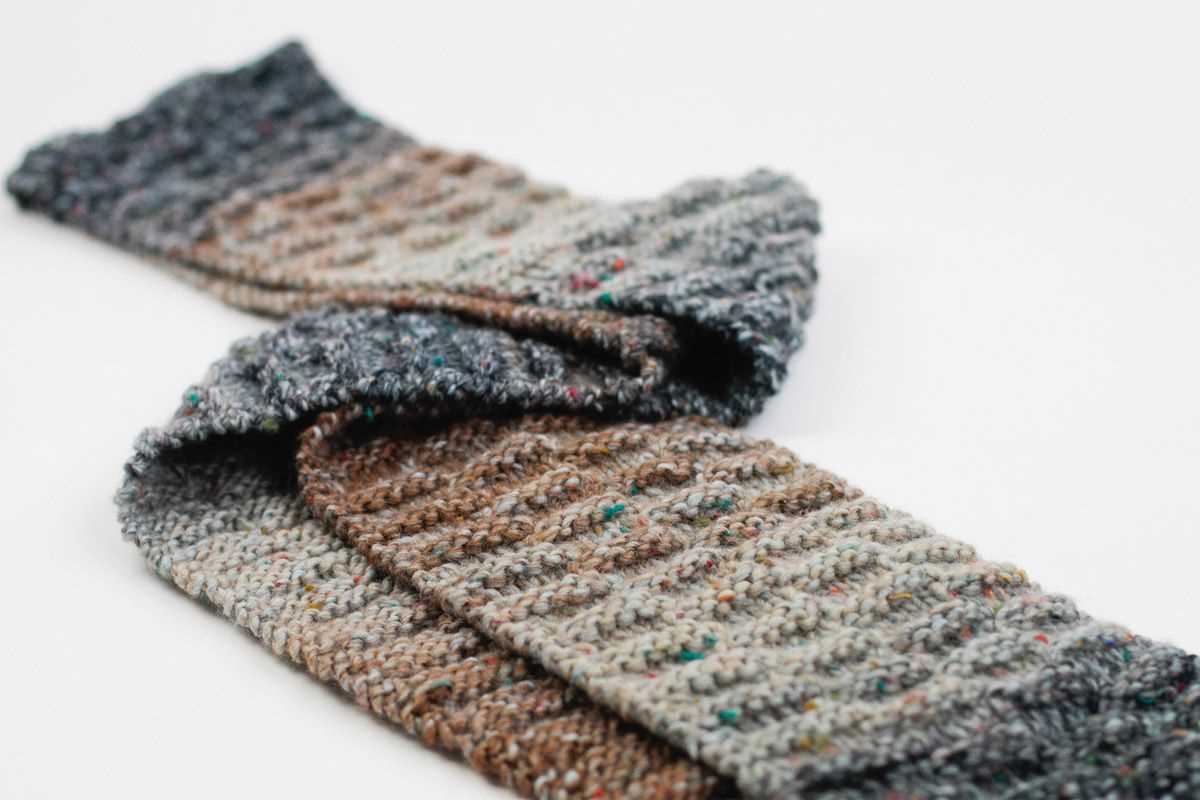
If you’re ready to try something slightly more advanced, the ribbed scarf pattern is a great choice. To create a ribbed scarf, alternate between knit and purl stitches in a repeating pattern. This creates a stretchy and visually interesting texture. Choose a soft and chunky yarn for extra warmth and comfort.
Seed Stitch Scarf
The seed stitch is another simple yet beautiful pattern for beginner knitters. To create a seed stitch scarf, alternate between knit and purl stitches within each row. This creates a textured pattern that looks like little seeds. Choose a variegated yarn to add some visual interest to your scarf.
Remember, practice makes perfect when it comes to knitting. Don’t be discouraged if your first few scarfs don’t turn out exactly as planned. With each project, you’ll improve your skills and gain more confidence. So pick up those needles and start knitting your first scarf today!
Garter Stitch Scarf
A garter stitch scarf is a simple yet classic knitting project that is perfect for beginners. The garter stitch is created by knitting every row, resulting in a fabric with a ridged texture. This type of scarf is a great way to practice basic knitting skills and create a cozy accessory for the colder months.
To create a garter stitch scarf, you will need a pair of knitting needles and a ball of yarn in your desired color. Choose a yarn that is suitable for the scarf’s intended use and that you enjoy working with. Once you have your materials, cast on an even number of stitches to begin your scarf.
To create the garter stitch pattern, simply knit every row. This repetitive motion creates the ridged texture that sets the garter stitch apart from other knitting patterns. As you continue knitting, you will see your scarf take shape and grow in length.
One of the advantages of knitting a garter stitch scarf is its versatility. You can choose to use a single color for a classic look, or experiment with stripes and color blocks to add visual interest. Additionally, garter stitch scarves can be made in various lengths and widths depending on your personal style and preference.
Once you have completed your garter stitch scarf, you can choose to add fringe or other embellishments if desired. This allows you to customize your scarf and make it unique to your taste. Whether you keep it for yourself or give it as a gift, a garter stitch scarf is a timeless accessory that is sure to be cherished for years to come.
Ribbed Scarf
A ribbed scarf is a classic knitting pattern that adds texture and depth to any outfit. With its simple yet stylish design, this scarf is perfect for both men and women. The ribbed pattern creates a stretchy and cozy fabric that is sure to keep you warm during the colder months.
To create a ribbed scarf, you will need to know how to knit and purl stitches. The pattern typically consists of alternating knit and purl stitches, creating columns of raised ribs. This creates a beautiful texture and makes the scarf reversible, so you can wear it however you like.
There are various ways to customize a ribbed scarf to suit your style. You can play with different yarn weights and colors to create a unique look. Additionally, you can adjust the width and length of the scarf to fit your preferences. Whether you prefer a wide and chunky scarf or a more narrow and sleek design, the ribbed pattern will still shine through.
If you are new to knitting, a ribbed scarf is a great project to start with. The repetitive nature of the pattern makes it easy to learn and perfect your knitting and purling techniques. You can also experiment with different rib stitch patterns, such as 1×1 ribbing or 2×2 ribbing, to add even more variety to your scarf collection.
Whether you are knitting a ribbed scarf for yourself or as a gift, this classic pattern is sure to be a hit. Its versatility, warmth, and timeless appeal make it a must-have accessory for any wardrobe. So grab your knitting needles and start creating your very own ribbed scarf today!
Seed Stitch Scarf
The Seed Stitch Scarf is a classic knitting project that is perfect for beginners and experienced knitters alike. The simple seed stitch pattern creates a beautiful texture that adds interest and warmth to any outfit.
This scarf is worked in a seed stitch pattern, which is created by alternating knit and purl stitches to create a bumpy texture. The result is a fabric that is both squishy and warm, making it an ideal choice for a cozy winter accessory.
The Seed Stitch Scarf can be knit with any type of yarn, but it is especially well-suited to solid or semi-solid colors that allow the stitch pattern to shine. It can also be knit in any width or length, making it easy to customize to your desired size.
To knit the Seed Stitch Scarf, you will need a pair of knitting needles in a size appropriate for your chosen yarn, as well as a yarn needle for finishing. The pattern itself is simple and easy to follow, making it a great project for knitters of all skill levels.
Whether you’re a beginner knitter looking for a first knitting project or an experienced knitter in need of a quick and satisfying project, the Seed Stitch Scarf is a versatile and beautiful choice. With its simple yet elegant design, this scarf is sure to become a staple in your winter wardrobe.
Intermediate Scarf Patterns
For knitters who have mastered the basic scarf patterns and are looking to take their skills to the next level, intermediate scarf patterns offer a fun and challenging project. These patterns often include more complex stitch patterns and techniques that can help knitters expand their repertoire and create unique and beautiful scarves.
1. Cable Knit Scarf
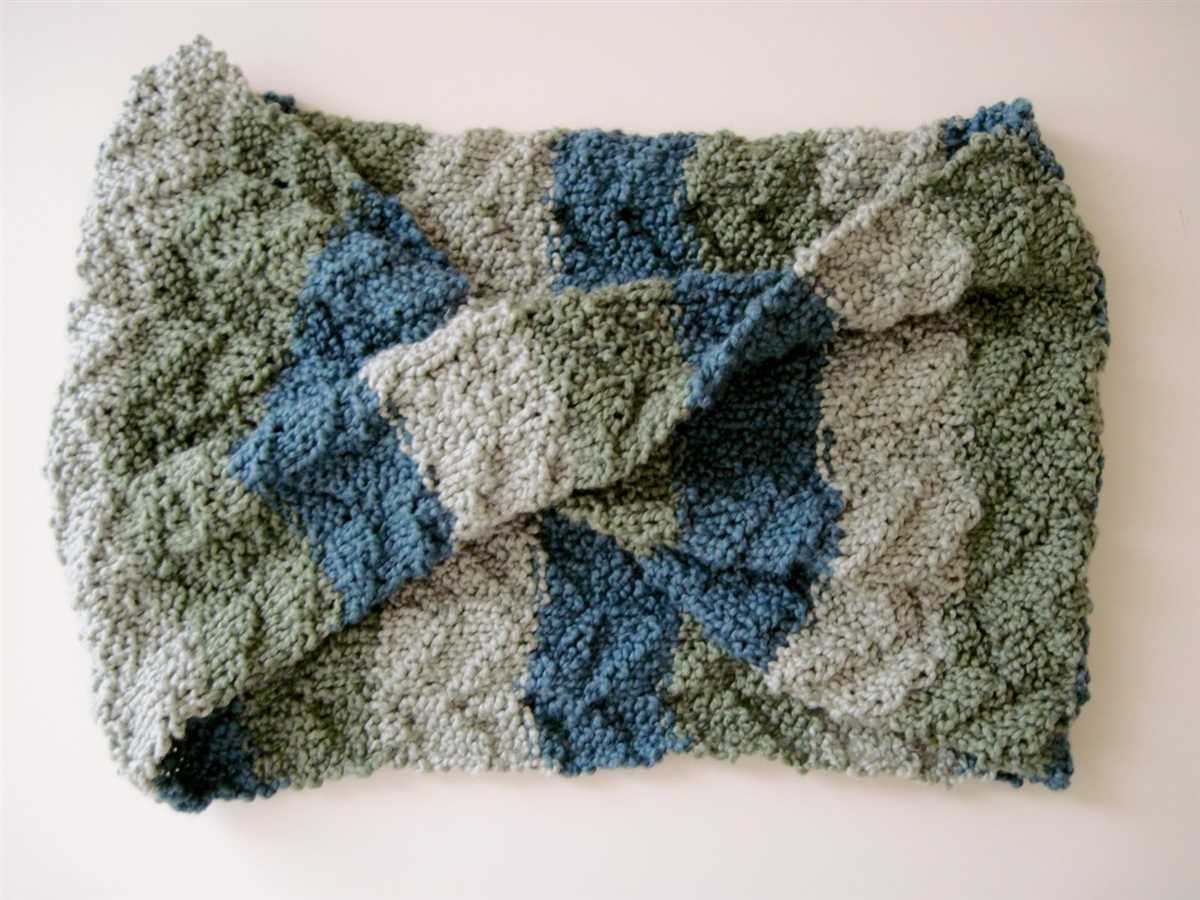
A cable knit scarf is a classic intermediate pattern that is sure to impress. This pattern typically involves working with cable needles to create intricate twists and braids in the fabric. The result is a textured and cozy scarf that adds a touch of elegance to any outfit.
2. Lace Scarf
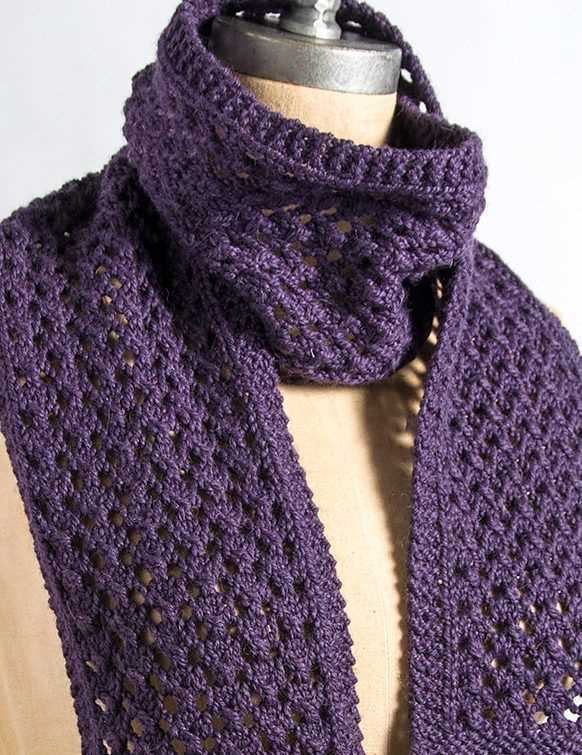
A lace scarf pattern is another intermediate option that adds delicate and intricate details to your knitting. The pattern usually incorporates lace stitches, yarnovers, and decreases to create a lightweight and airy fabric. Knitting a lace scarf requires careful attention to the stitch pattern, but the end result is well worth the effort.
3. Colorwork Scarf
For knitters looking to experiment with color, a colorwork scarf pattern is a great choice. This pattern typically involves using multiple colors of yarn to create unique and vibrant designs. Fair Isle and stranded knitting techniques are often used to create beautiful patterns and motifs. Colorwork scarves can be a bit more challenging to knit, but the final product is a stunning and eye-catching accessory.
4. Tuck Stitch Scarf
A tuck stitch scarf is a great intermediate option for knitters who want to try something different. This pattern involves working with tuck stitches, which are created by slipping stitches and then knitting into them later. The result is a textured and cozy scarf with raised stitches that add extra warmth and visual interest.
Overall, intermediate scarf patterns are a great way for knitters to challenge themselves and build upon their existing skills. Whether you choose to tackle a cable knit, lace, colorwork, or tuck stitch pattern, you’ll be sure to end up with a beautiful and unique scarf that showcases your knitting talent.
Cable Scarf
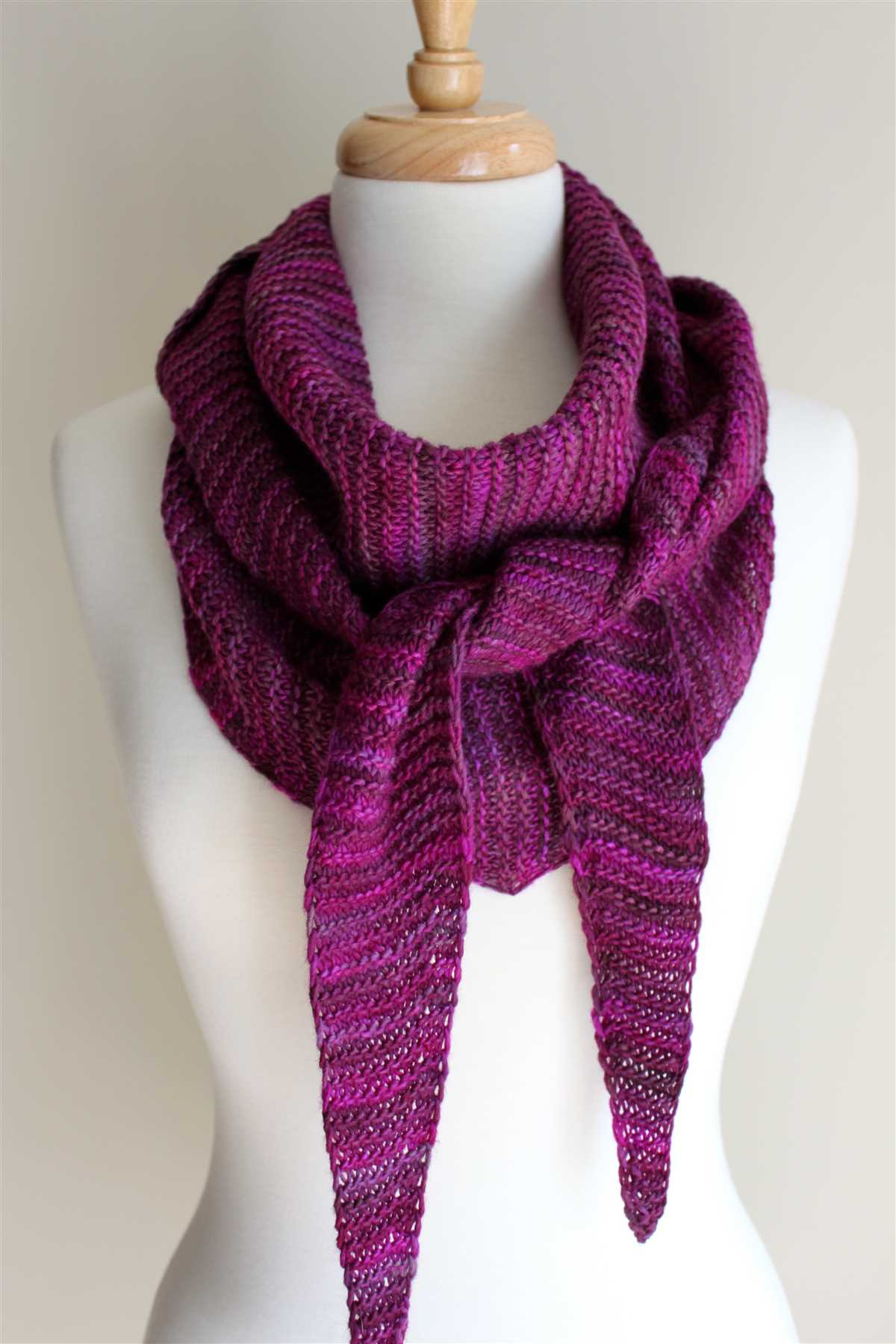
A cable scarf is a classic and versatile accessory that can add warmth and style to any outfit. The intricate cable patterns create a beautiful textured look, making it an eye-catching piece to wear during the colder months.
Materials:
- Yarn: Choose a soft and warm yarn, such as merino wool or alpaca blend, in your desired color.
- Knitting needles: Use a pair of needles that are suitable for the chosen yarn weight.
- Cable needle: This special needle is used to hold stitches while creating cable patterns.
Pattern:
- Cast on the desired number of stitches, keeping in mind the width of the final scarf.
- Row 1: Knit all stitches.
- Row 2: Purl all stitches.
- Row 3: Begin the cable pattern. This can vary depending on the specific design, but a common cable pattern is as follows:
- Knit the first stitch.
- Slip the next 2 stitches onto the cable needle and hold them in front of your work.
- Knit the next 2 stitches from the left-hand needle.
- Knit the 2 stitches from the cable needle.
- Continue the pattern, alternating between working the cable and knitting the remaining stitches.
- Repeat rows 1 to 3 until the scarf reaches the desired length, constantly checking the tension and adjusting as needed.
- End the pattern with rows 1 and 2, then bind off the stitches.
- Weave in any loose ends, and block the scarf if necessary to give it a polished and finished look.
A cable scarf is not only a great project for experienced knitters looking for a challenge, but it’s also suitable for beginners who want to learn new techniques. With its timeless design and warm functionality, a cable scarf is a must-have accessory for any knitting enthusiast.
Lace Scarf
A lace scarf is a beautiful and delicate accessory that can add an elegant touch to any outfit. Whether you’re dressing up for a special occasion or just want to add a bit of flair to your everyday look, a lace scarf is the perfect choice. With its intricate patterns and delicate stitches, a lace scarf is a true work of art.
When it comes to knitting patterns for lace scarfs, there are endless options to choose from. You can create a simple lacy design using basic stitches, or you can challenge yourself with more complex lace patterns. No matter what pattern you choose, knitting a lace scarf is a great way to improve your knitting skills and create a beautiful accessory.
To knit a lace scarf, you’ll need a soft and lightweight yarn that drapes well. Lace weight or fingering weight yarns are ideal for creating the delicate and airy look of lace. You can choose a solid color for a classic and timeless look, or opt for a variegated yarn for a more unique and eye-catching design.
One popular lace pattern for scarfs is the “Feather and Fan” stitch. This pattern creates a wave-like design that looks intricate but is actually quite simple to knit. Another popular lace stitch is the “Leaf Lace” stitch, which features delicate leaf motifs and adds a touch of nature-inspired beauty to your scarf.
Once you’ve chosen your pattern, it’s time to get started! Follow the instructions carefully, paying attention to special stitches and pattern repeats. Count your stitches regularly to ensure accuracy, as mistakes can be difficult to fix in lace knitting. With patience and practice, you’ll have a beautiful lace scarf to wear and show off your knitting skills.
Colorwork Scarf
A colorwork scarf is a great project for knitters who want to incorporate multiple colors and patterns into their knitting. Colorwork involves using different colors of yarn to create intricate designs and patterns on your scarf. This technique can be challenging but also very rewarding, as it allows you to create unique and eye-catching scarves.
To create a colorwork scarf, you will need to choose a color palette that you love. You can use as many or as few colors as you like, but keep in mind that using too many colors can make the design look busy. It’s also important to ensure that the colors you choose complement each other well and create a pleasing visual effect.
Here are some tips for knitting a colorwork scarf:
- Start with a simple pattern: If you’re new to colorwork, it’s best to start with a simple pattern or design. This will allow you to practice working with multiple colors without becoming overwhelmed.
- Use a colorwork chart: Many colorwork patterns come with a chart that shows you which colors to use and where to use them. This can make it easier to follow the pattern and keep track of your colors.
- Practice your tension: Tension is very important when working with multiple colors, as it can affect the overall appearance of your design. Take the time to practice and adjust your tension as needed to ensure an even and consistent fabric.
- Weave in your ends: With colorwork, you will have more ends to weave in than usual. Take the time to weave in your ends as you go to avoid a large, tangled mess at the end of your project.
- Block your finished scarf: Blocking is an important step in any knitting project, but it is especially important for colorwork. Blocking will help even out your stitches and allow the colors to pop.
Colorwork scarves can be a fun and challenging project for knitters of all skill levels. Whether you choose to create a simple striped design or a more intricate fair isle pattern, the end result is sure to be a beautiful and unique accessory that you’ll be proud to wear or give as a gift.
So why not give colorwork a try and create a one-of-a-kind scarf that showcases your creativity and knitting skills?